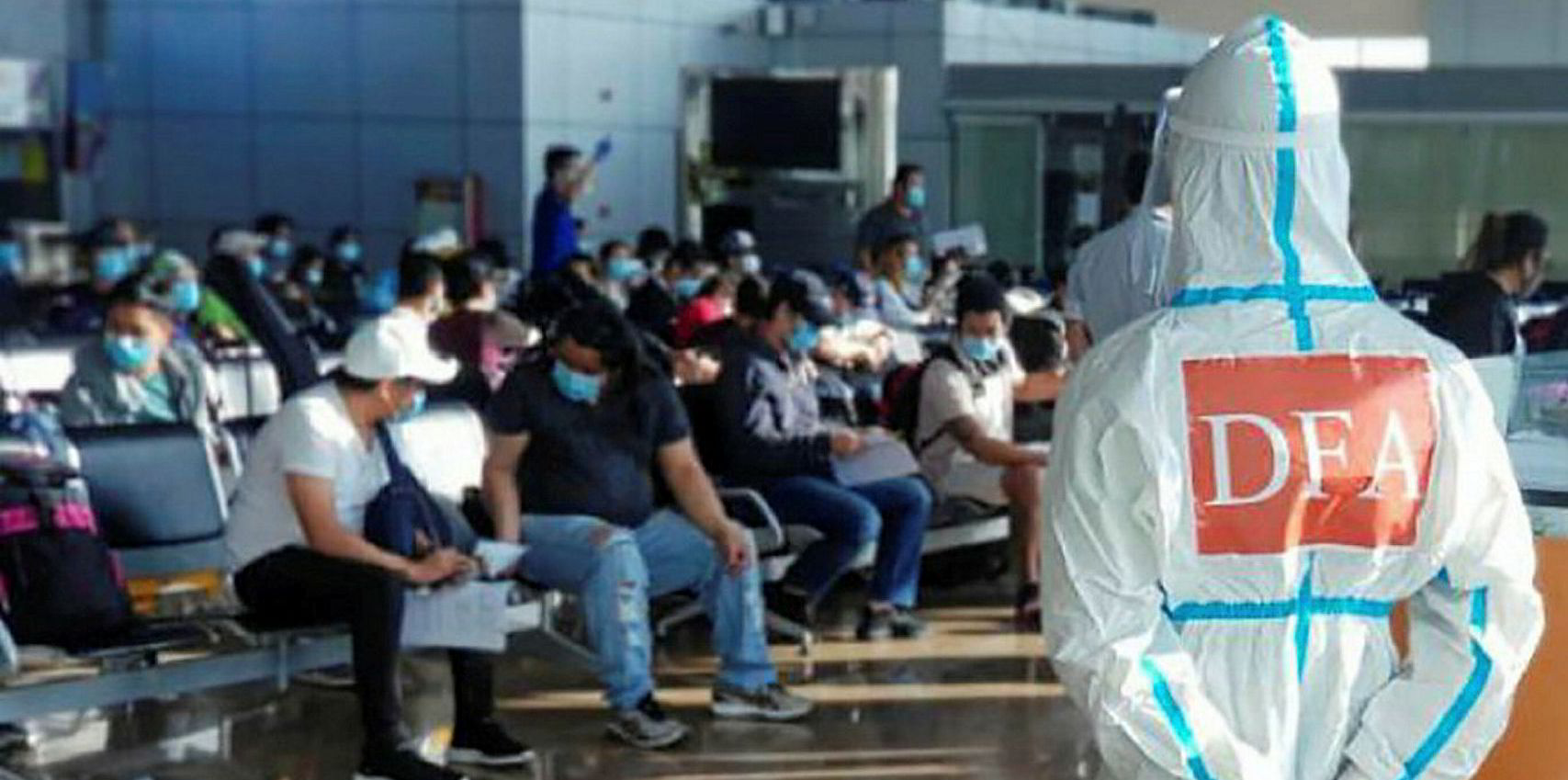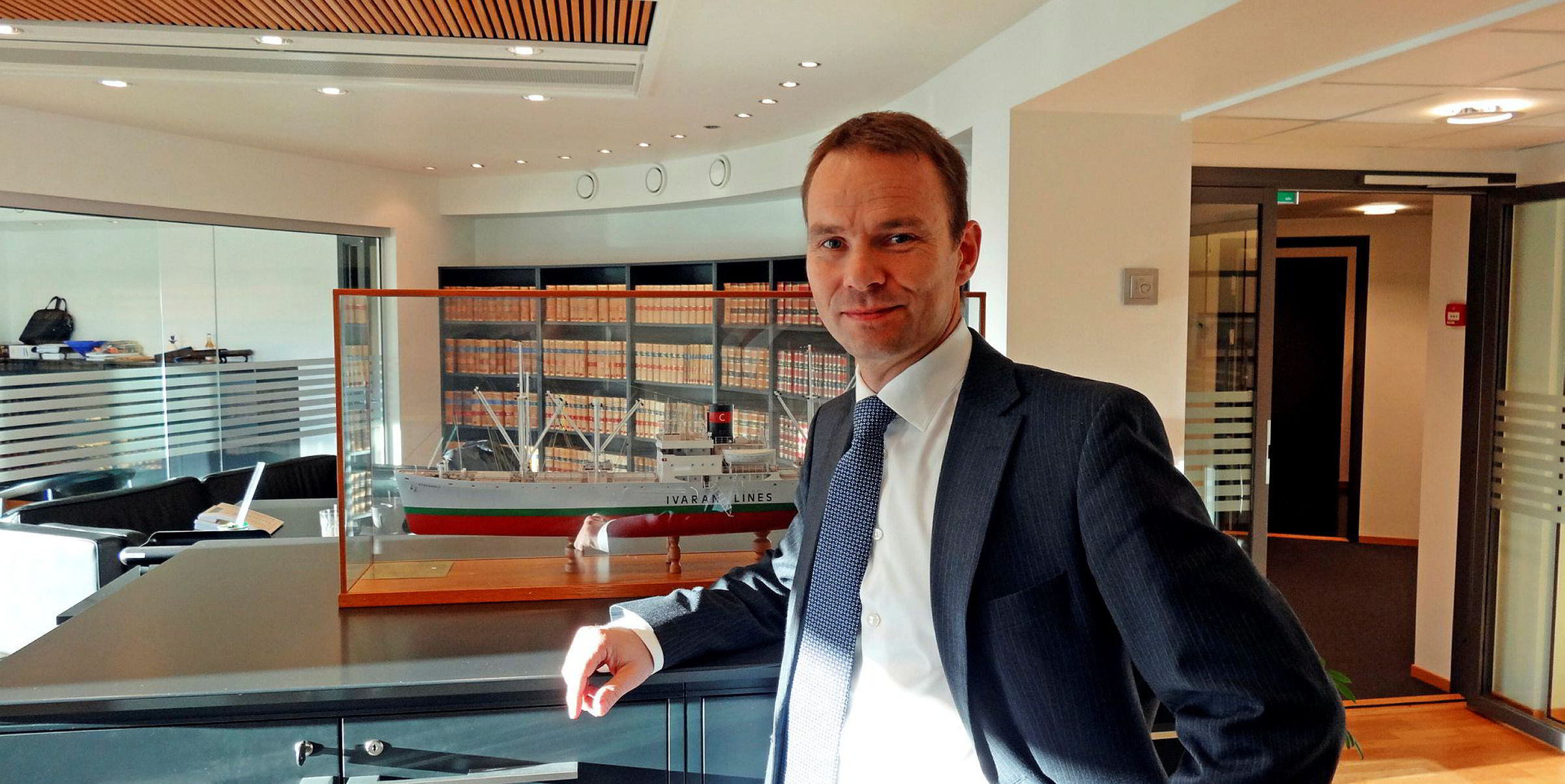The expertise of volunteers at a UK charity is helping to solve shipping’s crew changeover crisis.
Philip Eastell, co-founder of Container Shipping Supporting Seafarers (CSSS), told TradeWinds that the principles of box logistics are being adapted to transport seafarers to where they need to go.
The veteran container industry executive, whose day job is deputy head of global marketing for containers at Japan’s Chugoku Marine Paints, said the project arose after he talked to people in the industry about, appropriately enough, “thinking outside the box”.
CSSS has now begun working on coordinating with a private airline operator to move seafarers, he said.
This is “a bit like we do with land-based haulage, triangulating the movement of empty containers to manage empty and full boxes”, he explained. “We’ve used this logic of empty containers and got people involved in crew changes.
“If people say, ‘Look I’ve got 30 seafarers in New York who need to be moved within the next five days back to Manila’, the airline company can say, ‘I’ve got a flight coming in, bringing in seafarers to meet a Maersk vessel, we can move your CMA CGM crew back to Manila and from there we can move some seafarers back to India’.”
Eastell said the group has just achieved its first flight, noting that the airline was able to fill the rest of the flight with its own customers.
“Potentially we’ve got 20,000 seafarers that could be moved under this particular project.”
But, he added, there are still 600,000 displaced seafarers around the world because of the Covid-19 pandemic.
CSSS was co-founded by Eastell in 2017 to help raise funds for projects involving better healthcare and education for crew.
The charity, run by a dozen volunteers, has been involved in providing clinics in containers to offer Covid-19 testing.
Strong concern

“Over the years, I took a strong concern in the welfare of seafarers on board containerships, both from a welfare perspective and things to do with education and training,” Eastell told TradeWinds.
The charity meets shipowners at board level to put their case for funds or help with projects.
It has supported major maritime charity projects and kicked off a few of its own, Eastell said.
“We all do what we can to improve life for seafarers, not just on containerships. Suicide is more common among seafarers than among any other industry on the planet, made worse by crew change problems.”
CSSS said donations range from $1,000 up to the AP Moller Foundation giving $50,000 per year for five years.
German line Hapag-Lloyd has also been involved with projects.
The charity has “facilitated” the raising of $250,000 of direct funding over the past three years, Eastell said.
“Most container shipping lines are turning in a very healthy profit. We’re able to tweak the donating a bit, especially this year with the crew changes,” he said.
Eastell said he can tell shipowners: “The guys on the ships that helped you make this profit are probably coming off worst of all from it [the pandemic].” And, he told TradeWinds, “Lots more lines are buying into this.”
Eastell believes containership markets are looking much healthier, with results for major owners and box lessors poised to improve further in the third quarter.
He said 2020 is “potentially a really profitable year altogether if high freight rates are maintained and oil prices remain under what the lines budgeted for.”
Crystal ball
Production of new containers is up, driven by demand.
“We do see growth on trade routes. The volumes are increasing despite everything else going on with Covid-19. Container demand is growing. Customers can’t get new orders for the first quarter next year, and prices are going up.”
The industry predicted 201,000 teu of new container production in August, but it was more than 227,000 teu, according to Eastell. “No one’s crystal ball is working in container shipping,” he said.
September looks set for 350,000 teu of new production, he added. “It’s crazy, but it just shows people must have confidence in the container shipping industry to be lending money to shipping lines or container leasing companies to invest in new containers.”







